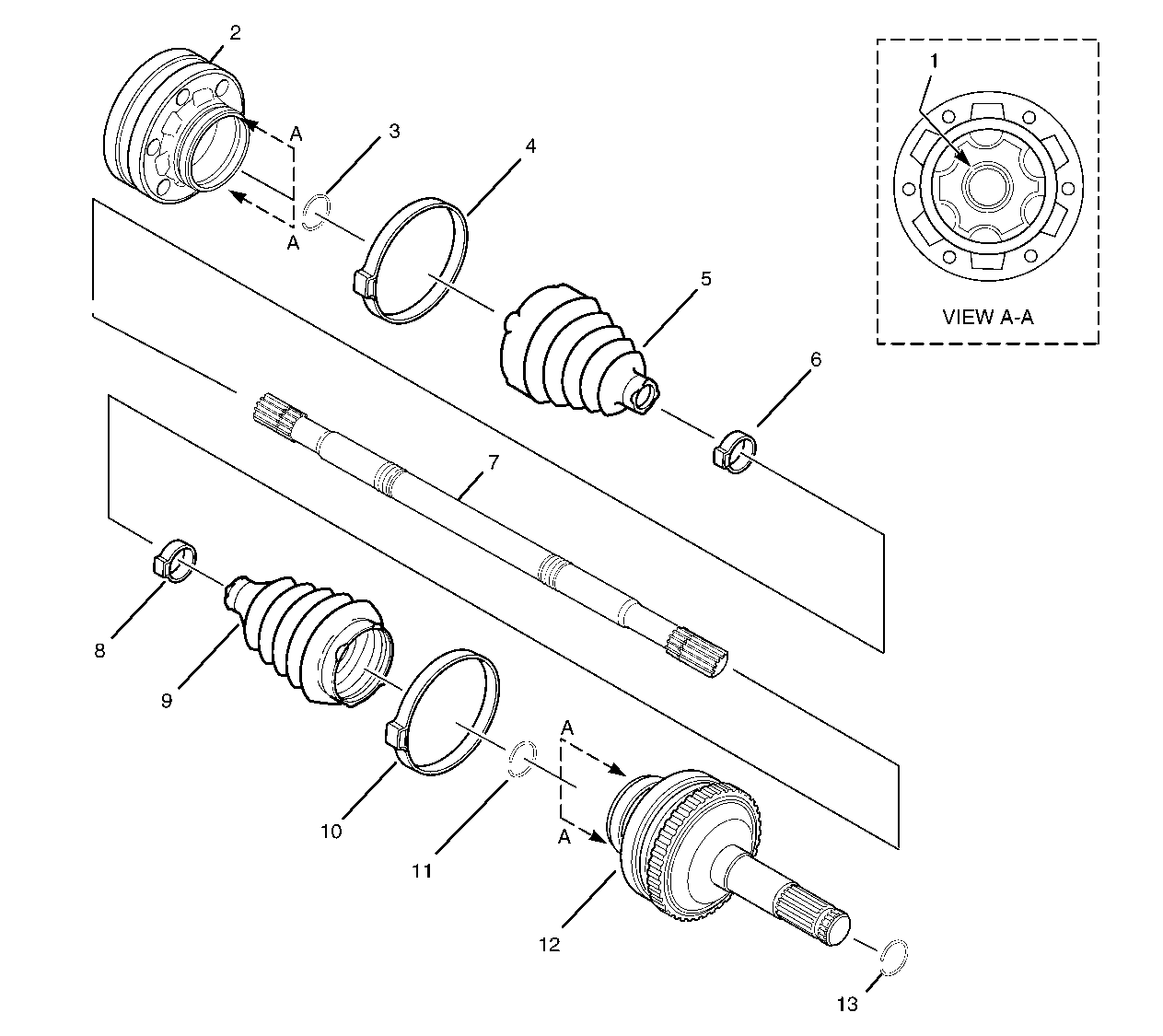
The rear wheel drive shaft is of a constant velocity design. The inboard (12) and outboard (2) joint housings are a cross-groove type which allows axial, but not lateral, movement. This axial movement feature allows the wheel drive shaft to compensate for the inclination changes incurred during the movement of the rear suspension while maintaining steady torque transfer from the rear drive axle to the rear wheels. The inner joint races (1) are held secure to the wheel drive shaft (7) by barrel-type retaining rings (3, 11). These retaining rings fit into a groove machined into the inner joint races.
The wheel drive shaft joint seals (5, 9) protect the inboard and outboard joints from contamination due to the entry of water or foreign materials. The seals are secured to the joints with stainless steel clamps (4, 6, 8, 10). The wheel drive shaft joint seals are made of a thermoplastic material which is extremely durable, yet pliable enough to allow the movement of the joints. Care must be exercised, however, when handling the wheel drive shafts or when replacing the seals in order to avoid puncturing or otherwise damaging the seals with sharp objects and underbody components.
The grease contained in the joints and housings is protected by the seals. The grease is a special compound that is resistant to temperature extremes and to breakdown from friction. This grease is designed to last the life of the wheel drive shaft and therefore does not require periodic replacement. However, if the seal becomes damaged and the grease is lost or contaminated, the wheel drive shaft must be disassembled, cleaned and thoroughly inspected for damage. Then the seal and grease must be replaced.
